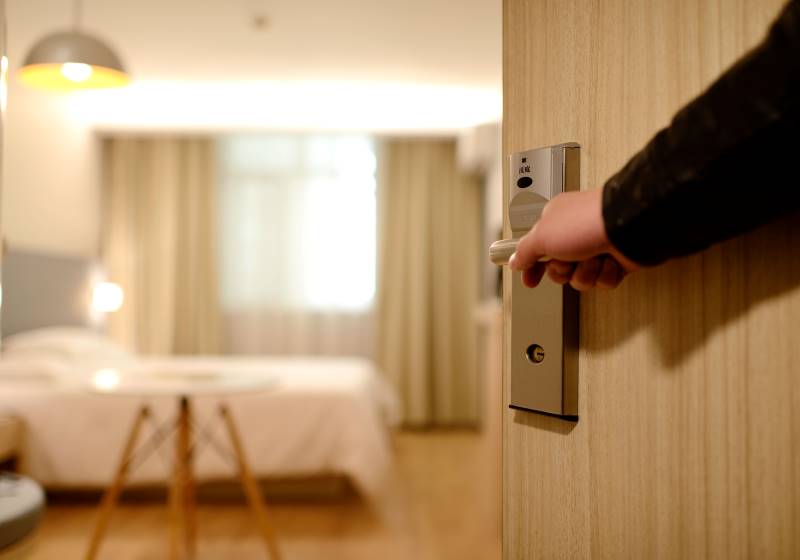Site inspections are an important and popular tool of the trade for hotel and venue sales teams. There is no better way to engage a potential customer than getting them to experience your property first hand. And while the way to host a site inspection may seem to be a no-brainer, there are important things to include (and avoid) to make sure you provide the best experience for your client and give yourself a better chance of winning the business.
Here are our six tips to ensure a successful site inspection for your hotel.

1. Know your clients
This may seem obvious, but it’s the first and most vital rule for any sales activity.
When you’re talking to your potential client about arranging a site inspection, take a few minutes to really understand them, their business and their needs. Find out which properties they’ve used in the past, the aspects they liked and the challenges they faced. Discover the things that are most important to them (and this will probably be different for everyone) so that you can highlight them in your site inspection.
Also try and understand their greatest concerns or objections, so you can be prepared to address them during their visit.
2. Be prepared and plan your site inspection
Once you have an understanding of your client and know their goals, preferences and concerns, spend a few minutes planning the site inspection that will best meet their needs.
In your planning, consider the Law of Primacy and Recency – which suggests that the information presented first in a learning experience, and information that is presented last has the greatest impact on persuasion. First impressions are vital, and the final impression tends to stick in the mind – it’s the information in the middle that can sometimes be lost in a busy brain. So bookend your site inspection with the best you have to offer.
Make sure you create a memorable welcome for your guest. Have clear welcome signage so they know where to go, and have a welcome drink ready on arrival.
Walk your guest through the different room types in order, finishing on the best room category you have available. Make clear the features of each category so it’s easy to understand which rooms will best suit their needs.
Finish the site inspection with another “wow” experience. Whether it’s coffee and dessert (with a custom dessert created by the chef), canapés and drinks with an outstanding view, or a quirky gift that helps them remember you and your property, aim to create an experience that delivers a lasting impression.
And while you’re planning, schedule your follow-up activity in your calendar so it isn’t overlooked or forgotten.
3. Don’t assume – do a pre-check
Before your guest arrives, do a walk-through of the site inspection path and check all of the rooms and areas that you’ll be visiting.
Let housekeeping know the rooms you’ll be visiting and the time of your site inspection so they’re not blocking the hallway during the visit. Double-check the keys work so you’re not left embarrassed or looking unprepared.

4. Create the experience
Let your front office staff know about the site inspection and who is attending, so they can recognise and welcome them personally.
In each of the rooms turn the lights on and make sure the air conditioning is set to a comfortable temperature. Check the room is made up to its best standard, and it smells fresh and clean (open windows if possible to let in fresh air). Have quiet music playing in the background. Create an experience that matches the needs and preferences you discussed with your client before their visit.
5. Listen carefully and pay attention
A site inspection is a chance to talk about your property, but equally important is the opportunity it provides to really understand your client and their needs.
As you walk through the site inspection, if you pay close attention you will find out even more about your clients and their true preferences and issues. When they comment enthusiastically about an area of your hotel, file that away in your brain as an aspect to highlight in your follow-up conversations. If they seem concerned about certain aspects or ask more probing questions, take note so you can offer alternatives that alleviate their concerns.
There are nuggets of knowledge even in the small talk you make as you spend the time together. Each thing you learn makes it easier to tailor the experience, your follow-up and any future opportunities to really suit that client.

6. Always follow-up
The site inspection is just the start of the process, and your follow-up activity lets you put to use the information you discovered about your client during their visit, and gives you the chance to stand out from the crowd. A boring follow-up email asking if they need anything else? Meh. A personalised email that reinforces the things you discussed, provides additional value specific to them and makes them feel heard and important? Much more likely to get a good result.
lets you put to use the information you discovered about your client during their visit, and gives you the chance to stand out from the crowd. A boring follow-up email asking if they need anything else? Meh. A personalised email that reinforces the things you discussed, provides additional value specific to them and makes them feel heard and important? Much more likely to get a good result.
So how can you follow-up without appearing spammy? Email or call with any information you promised to chase up during their visit. Send a gift that you know they would love as a thank you for their time. Follow-up within 1-2 days of their visit, and schedule regular follow-ups over the next few months.
Nothing is as effective as getting a potential client to visit your property, and these rules help you make sure your site inspections are efficient and effective.
© 2025 | Herobe Pty Ltd | All Rights Reserved
